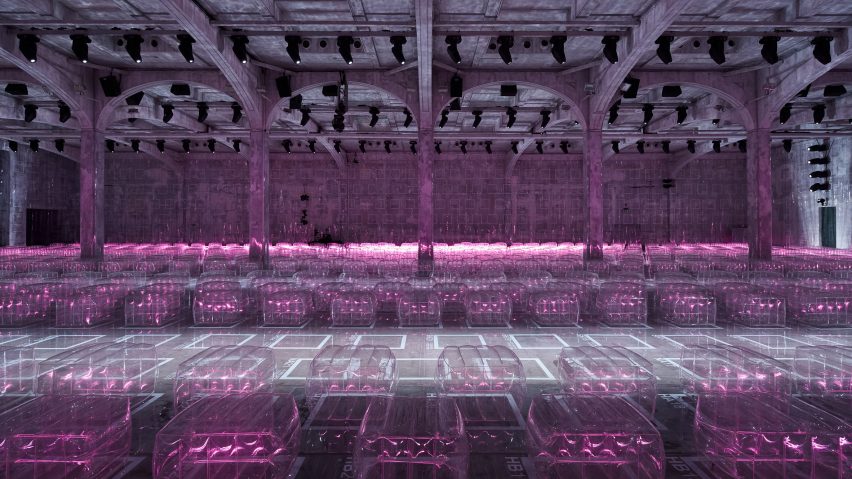
AMO arranges neon-lit Prada catwalk show on strict grid
For Prada's menswear Spring Summer 2019 show, AMO designed a grid that marked out spaces for guests who sat on inflatable Verner Panton stools.
The Italian fashion house presented its mismatched and colourful mens collection in the stripped-back concrete interiors of its own Via Fogazzaro space in Milan, on 17 June 2018.
Created by AMO – OMA's research and design studio – the set was treated as an "architectural field" designed to control the dynamics of the show.
Described by the studio as maintaining a "strict serial layout," the space was ordered on a grid system based on Cartesian coordinates. This grid defined the areas occupied by guests, with four different routes left free for the models to walk down.
"A geometric pattern invades the room, a manifestation of the principles that organise the show’s choreography," AMO explained.
"Numbers and symbols define the exact positioning of the actors in the space, alluding to geographic coordinates of remote places."
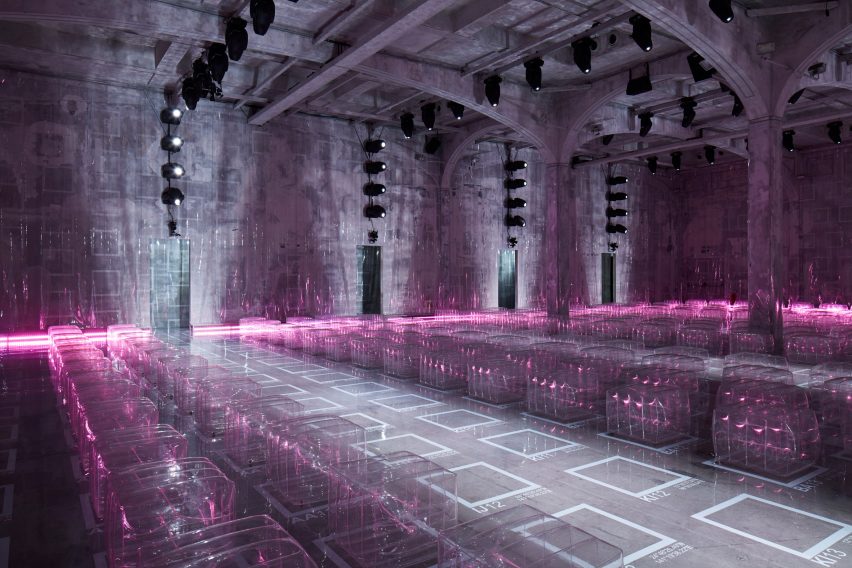
"A regular grid of squares evenly organised in space obsessively cover the surfaces of the room," said AMO.
"It serves as [a] blueprint to occupy the space defining the four trajectories of the catwalk, as well as, which of the squares should be occupied by the stools and therefore the guests," the studio continued.
"Different elements were used to enhance the graphic impact of the grid: the seating code and a set of coordinates that correspond to series of remote islands that somehow recall the mathematical approximation of geographic representation."
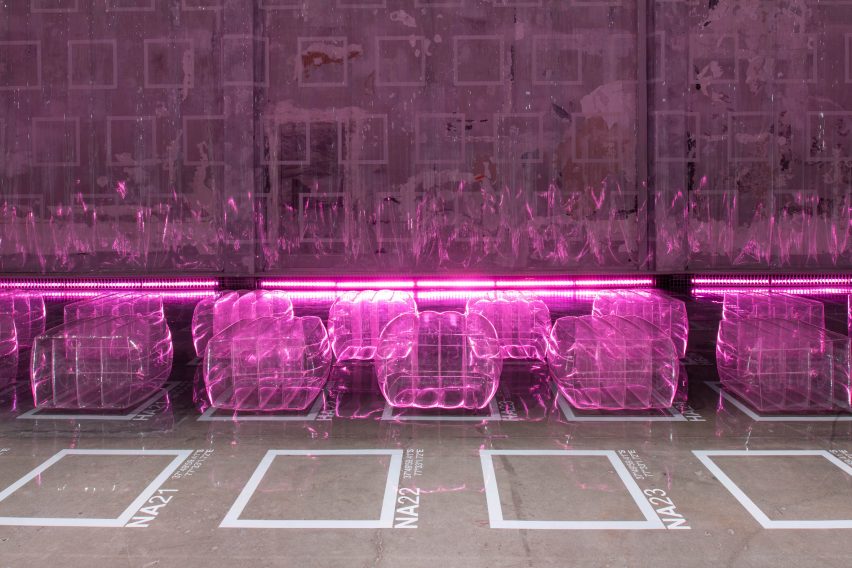
The catwalks were lined with an exclusive re-edition of Vernon Panton's 1960s inflatable stool, which AMO and Prada chose for their "contemporary attitude, lightness and transparency."
The cubic stools are not backlighted as they appear to be, but rather are illuminated indirectly and irregularly by scattered light sources that, along with a strip of pink lights along the border of the room, aim to give the space a "psychedelic" feel.
The room's walls were covered in translucent sheets to further reflect the pink lights.
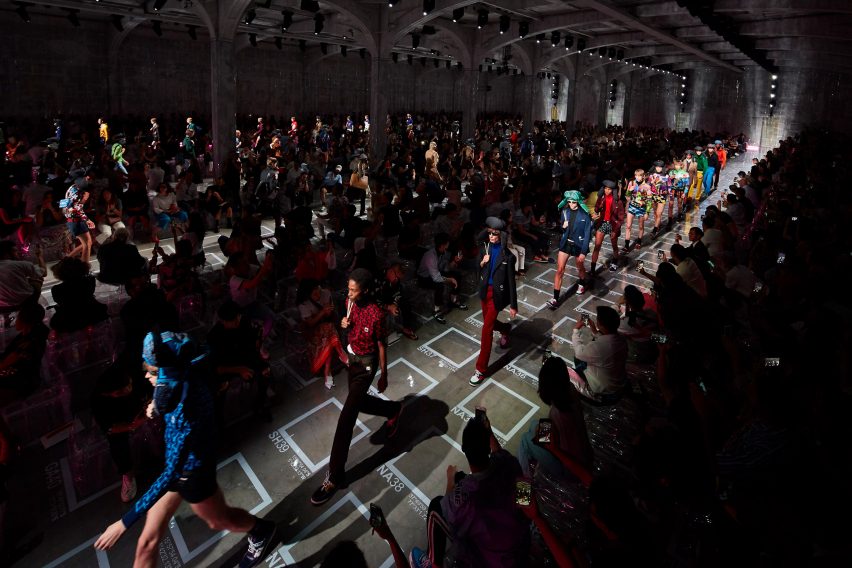
According to AMO the catwalk design aimed to "bring fashion to the foreground" by putting into question the recent practice that sees show sets as "explanatory efforts to contextualise collections."
AMO told Dezeen that Prada does not disclose any details about the fashion collections prior to the show, with the design process for the catwalk beginning before Prada designed the collection.
"Somehow we can grasp the connection between fashion and space just during the show. The collection can be either in tune with the space or in opposition," said the studio.
"For this reason, in this case there was not a specific relation between the catwalk and the fashion, if it wasn't for the geometric patterns that featured in both designs," continued AMO.
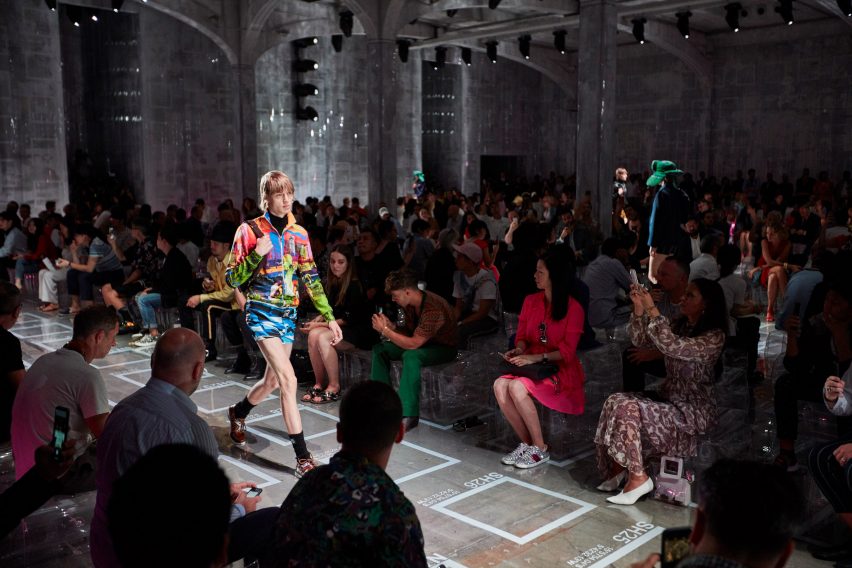
Although Prada didn't discuss the collection with AMO before the space was designed, the use of plastic and transparent materials was part of the discussion between the two firms early on, with the inflatable stools chosen to give an "unexpected experience" to the guests.
This is not the first time Prada has worked with OMA and AMO. The pairing grew out of a friendship between founders Miuccia Prada and Rem Koolhaas, and has seen various collaborations over the years.
Previously, AMO divided the catwalk into a series of colourful interiors with beds and benches for Prada's Autumn Winter 2017 show, and installed a sloping mesh for its Spring Summer 2017 show.